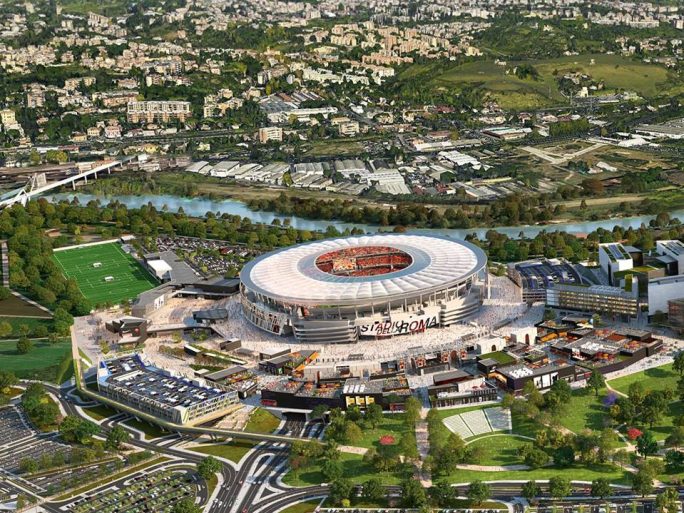AS Roma Seeks Technological Revolution In Bid To Become Football Superpower

Roma Chairman Jim Pallotta has started a tech revolution at the club to make it a European superpower and to deliver a state of the art stadium – but not VR
AS Roma is one of the most famous and historic clubs in Italian football, but its three national championships pale in comparison with those recorded by the triumvirate of Juventus, Inter Milan and AC Milan.
The club’s last Serie A title came in the 2000-01 season, after which the club have finished runners-up on nine occasions.
The European football landscape has changed considerable since that success, with moneyed ‘super clubs’ like Paris Saint-Germain, Real Madrid and Bayern Munich dominating national and European competitions.
![]()
A sleeping giant?
Roma, with its history and large fanbase, is one of the clubs capable of graduating to this elite tier of teams. Juventus may still be the dominant force in Italian football, but the vacuum left by the underperforming Milan clubs means the door to the riches of the UEFA Champions League is open.
This potential has not one unnoticed. In 2011, a group of US investors with connections to NBA basketball giants Boston Celtics assumed control of the club and quickly worked to transform the culture and structure of Roma’s off-field operations.
In the late 1980s and early 1990s, Serie A was the best league in Europe. It had the best players and its clubs enjoyed considerable success in European competitions.
But a combination of off-field scandals such as the Calciopoli match-fixing scandal, financial mismanagement and a television market collapse, meant several clubs have struggled since those glory days.
The failure to modernise on and off the pitch, especially with regards to stadiums, has seen the Premier League and La Liga become more attractive to players and an increasingly international audience.
![]()
Technology plans
For Jim Pallotta, Chairman of Roma and co-owner of the Celtics, the key to restoring Roma’s fortunes was through the better use of technology to better understand and attract fans, while opening up new streams of revenue.
This can be seen at other clubs, such as Real Madrid and Manchester City, both of whom have embarked on significant off-field revolutions in the past few years.
The first pillar of this strategy was information. While the club had information on its season ticket holders and members, it didn’t have data on other ‘fans’. The ownership created a CRM system that tracked every interaction a person had with the club, such as a website visit, club shop purchase or social media post to build a profile for a potential customer.
User generated content has also been harnessed. Monitoring trends and content across the fanbase could lead to a relevant new t-shirt being designed and released as quickly as possible. Content through official channels has also changed in a bid to attract and engage fans –and this has even seen the launch of a radio station.
Pallotta said it decided to launch ‘Roma Radio’ because there are multiple football radio stations in the city competing for listeners and alleges that they ‘make things up’ in a bid to beat the competition.
While traditional media observers might be horrified at the thought of a club seeking to control its message – Swindon Town barred local reporters in favour of its own official app, while Liverpool recently granted broadcast rights to a match to its own in-house radio station –Roma Radio promises to give fans unprecedented access to the club and round-the-clock coverage.
Roma also boasts that is it the second fastest growing team on Facebook and the first in Europe to broadcast a game over Facebook Live, albeit a pre-season friendly.
Modern stadiums
“We want to be everyone’s second favourite team,” said Pallotta. “There are 3 billion football fans out there, and if I can get just 1 percent of them, that’s 30 million fans. If they spend $5, that’s $150 million in revenue.”
But despite all the other avenues of revenue that new media affords, match day revenue is still hugely significant to football clubs and after years of negotiations with the city council, Roma has been given the go-ahead to build its new home – the Stadio della Roma, or the the ‘New Coliseum’.